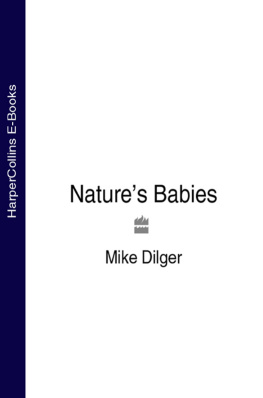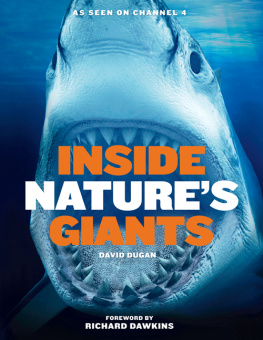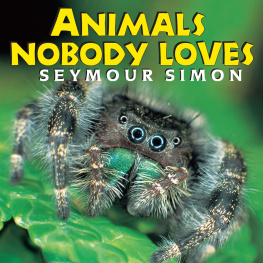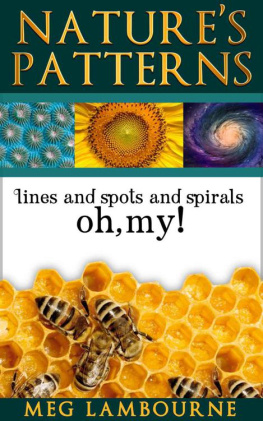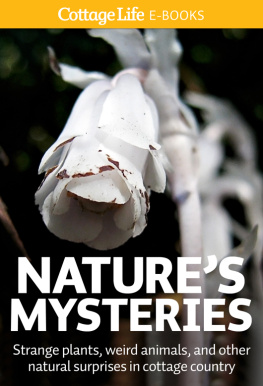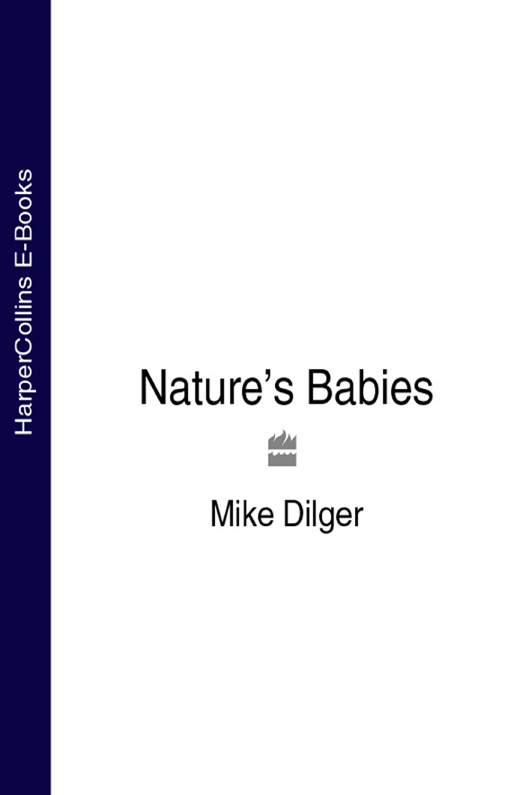
To the Browns an amazing family of naturalists and come to think of it, an amazing family as well.
William Collins
An imprint of HarperCollins Publishers
77-85 Fulham Palace Road
Hammersmith, London
W6 8JB
www.harpercollins.co.uk.
First published in 2008
Text Mike Dilger
Pictures individual copyright holders
The Mike Dilger asserts his moral right to be identified as the author of this work. All rights reserved under International and Pan-American Copyright Conventions.
Editor: Verity Shaw
Index: Ben Murphy
A catalogue record for this book is available from the British Library.
By payment of the required fees, you have been granted the nonexclusive, nontransferable right to access and read the text of this e-book on-screen. No part of this text may be reproduced, transmitted, downloaded, decompiled, reverse-engineered, or stored in or introduced into any information storage and retrieval system, in any form or by any means, whether electronic or mechanical, now known or here in after invented, without the express written permission of HarperCollins e-books.
HarperCollinsPublishers has made every reasonable effort to ensure that any picture content and written content in this ebook has been included or removed in accordance with the contractual and technological constraints in operation at the time of publication.
Source ISBN: 9780007279265
Ebook Edition MAY 2014 ISBN: 9780007588930
Version: 2014-04-28
CONTENTS
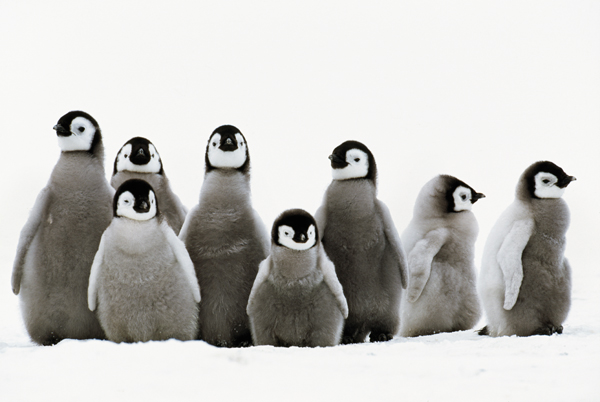
Tortoise, Galpagos giant
Frans Lanting/FLPA
Natures Babies is an unashamed celebration of the fully technicoloured glory of the natural world itself. The seemingly infinite variety of different baby shapes and sizes is of course down to the cleverest and most powerful beast of them all: evolution. What else would have created babies that at one end of the spectrum are impossibly cute, yet at the other end would not look out of place in the most off-the-wall science fiction novels?
Parenting skills can vary enormously from the non-existent to the lavish. For some animals being born is a rude awakening into a harsh, unforgiving world with no parental care whatsoever just ask leatherback turtle hatchlings as they have to run the gauntlet to sea!
This book showcases some of the weirdest and wonderful stories of the babies development, too. Who would have thought, for example, that a grey kangaroos baby is born no larger than a kidney bean, and from the moment it enters the world has the most daunting journey to complete even before it will be able to feed for the first time? And exactly why do Galpagos tortoises take an astonishingly long 25 years to reach maturity?
Whilst focusing on the babies, this book will hopefully also test our own notions of how we humans fit into the natural world. We think of our birth, babyhood and adolescence as normal, but how normal compared to other animals are we? Whilst we perhaps arrogantly think of the human race as producing model babies and parental skills that are unsurpassed, do we in fact have something to learn from our wild cousins? After reading Natures Babies, you decide!
Found right across North America, Europe and Russia, with smaller pockets in Asia, the brown bear is both the most common and widespread of all eight bear species. The famed grizzly is the race of brown bear most commonly found in Alaska and Canada, so-called because its hair is lighter at the tip than at the base which gives this bear a grizzled appearance.
The larger grizzlies can reach an impressive 700kg (1,500 lb) in weight, and with their massive shoulders, huge forearms and plate-sized paws, they must be one of the strongest animals in the world; their only predator is, of course, man and his gun. Ironically for an animal with such size and strength, the main diet of grizzlies tends to be roots and fungi, supplemented by fish and small mammals if and when available. Their incredible bulk is often used to drive wolves and cougars away from kills.
During times of plenty in the summer months, the female grizzly puts down huge reserves of fat which she relies on to get her through the winter. The breeding season also occurs in the summer, but the fertilized egg will not be implanted and begin to grow until the winter, when the female is tucked away asleep in her den, hidden away from the worst of the weather. The most common litter size is two; the blind, toothless and hairless cubs are born in the winter den and grow quickly on their mothers milk, only emerging with their mother into the big, wide world when spring finally breaks.
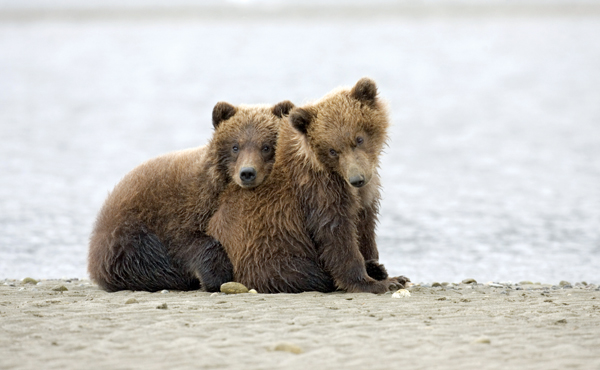
Russia
Roger Tidman/FLPA
Little grizzlies remain with their mother for two to four years, learning the tricks of the trade which will prove essential if they are to grow up as big and strong as their parents.
Unlike seals and dolphins, our smallest marine mammal has no blubber. This means that adult sea otters have to spend up to three hours a day grooming their fur meticulously to ensure that it stays in top condition and remains able to trap the vital insulating layer of air which keeps them warm.
When they are not busy grooming themselves, sea otters spend a large part of the day hunting for food. From depths of up to 40 m (131 ft) they retrieve clams and sea urchins from among the rich kelp forests on the sea floor and bring these up to the surface. The sea otter is an animal which likes to spend a large part of its life belly up, even when feeding. Lying on its back, it uses its underside as a table to crack open these tough shells with the help of a special stone which it retrieves from a waistcoat pocket situated under its armpit.
Although the birth of the single pup takes place on shore, the mother immediately guides it straight into the water. Despite being born with its eyes open, and with a full set of milk-teeth and baby fur, the sea otter pup is initially very vulnerable to the cold, and so it spends the first four weeks of its life being groomed and fed on its mothers belly. When the mother does have to leave her pup on the surface whilst diving for food, she often wraps her youngster up in kelp to prevent it drifting off. As the pups fur traps so much air, it bobs on the surface like a cork until its mother comes back to retrieve it!
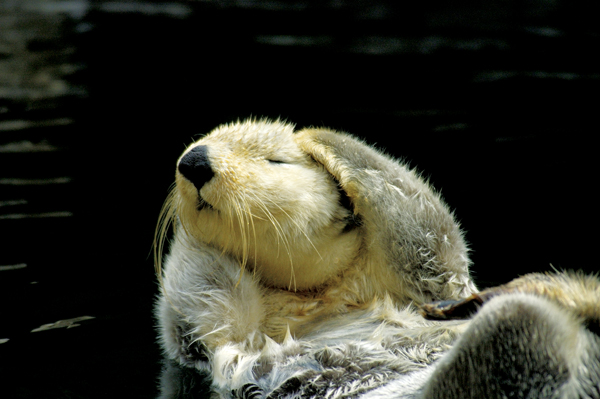
Sea otter
Mark Newman/FLPA
Baby sea otters spend much of their first year of life on their mothers belly, where they are groomed, fed and kept warm.
With its torpedo-shaped body, long, narrow wings and its dagger-like bill, the gannet is a very lean and very mean fishing machine. It is also an incredibly sociable bird during the breeding season and nests in densely packed colonies on steep cliffs and raised slopes around the coasts and islands surrounding Britain, northern Europe and northeast America.

